Analyze EBSD Data
Here we discuss tools for the analysis of EBSD data which are independent of its spatial coordinates. For spatial analysis, we refer to this page.
| On this page ... |
| Data import |
| Orientation plot |
Data import
Let us first import some EBSD data:
plotx2east ebsd = EBSD.load(fullfile(mtexDataPath,'EBSD','Forsterite.ctf'),... 'convertEuler2SpatialReferenceFrame'); plot(ebsd)
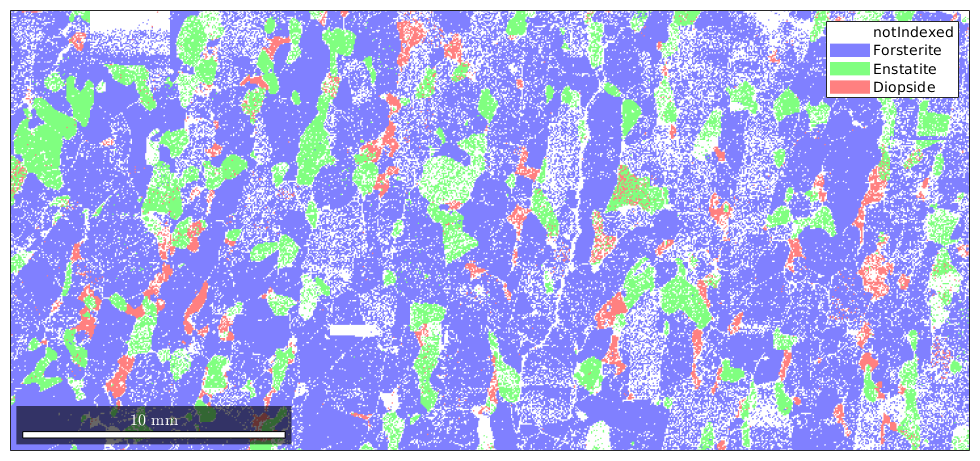
Orientation plot
We start our investigations of the Forsterite phase by plotting some pole figures
cs = ebsd('Forsterite').CS % the crystal symmetry of the forsterite phase h = [Miller(1,0,0,cs),Miller(0,1,0,cs),Miller(0,0,1,cs)]; plotPDF(ebsd('Forsterite').orientations,h,'antipodal')
cs = crystalSymmetry mineral : Forsterite color : light blue symmetry: mmm a, b, c : 4.8, 10, 6 I'm plotting 1250 random orientations out of 152345 given orientations You can specify the the number points by the option "points". The option "all" ensures that all data are plotted
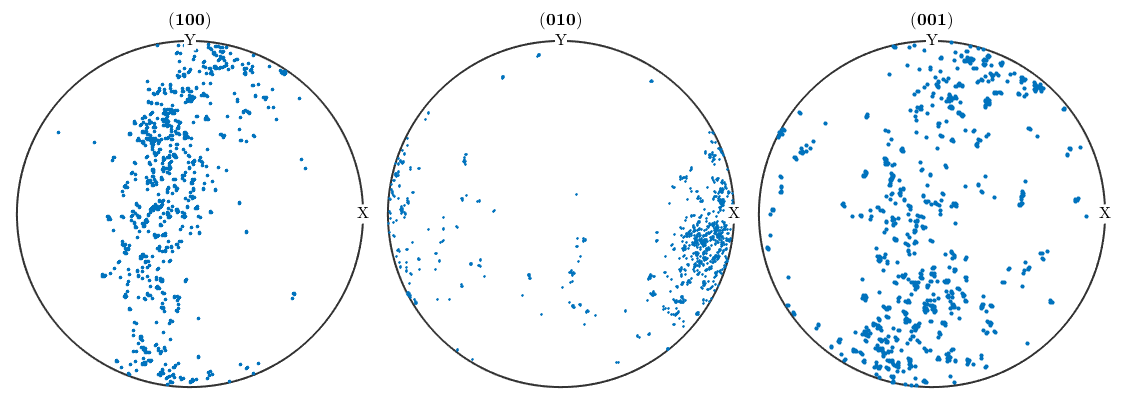
From the {100} pole figure, we might suspect a fibre texture present in our data. Let's check this. First, we determine the vector orthogonal to fibre in the {100} pole figure
% the orientations of the Forsterite phase ori = ebsd('Forsterite').orientations % the vectors in the 100 pole figure r = ori * Miller(1,0,0,ori.CS) % the vector best orthogonal to all r rOrth = perp(r) % output hold on plot(rOrth) hold off
ori = orientation
size: 152345 x 1
crystal symmetry : Forsterite (mmm)
specimen symmetry: 1
r = vector3d
size: 152345 x 1
rOrth = vector3d
size: 1 x 1
antipodal: true
x y z
0.944141 -0.189955 0.269287
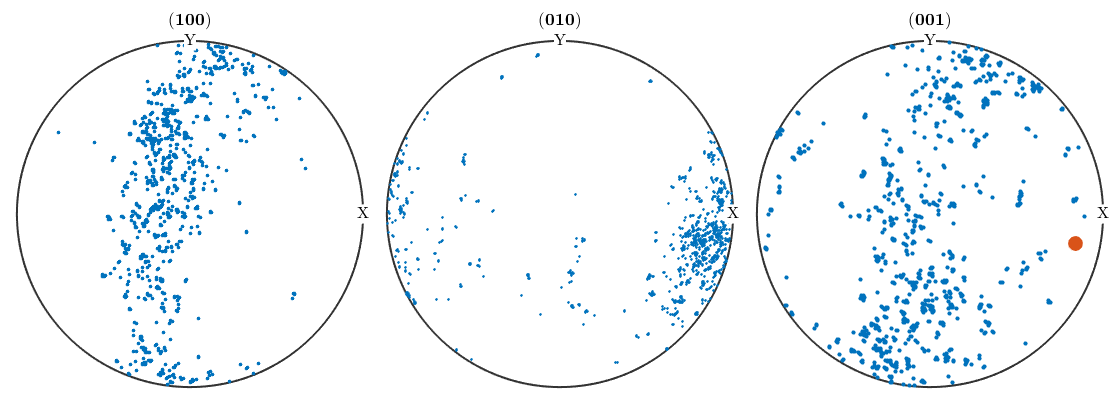
we can check how large is the number of orientations that are in the (100) polegigure within a 10-degree fibre around the great circle with center rOrth. The following line gives the result in percent
100 * sum(angle(r,rOrth)>80*degree) / length(ori)
ans = 61.7854
Next, we want to answer the question which crystal direction is mapped to rOrth. To this end, we look at the corresponding inverse pole figure
plotIPDF(ebsd('Forsterite').orientations,rOrth,'smooth') mtexColorbar %From the inverse pole figure, it becomes clear that the orientations are % close to the fibre |Miller(0,1,0)|, |rOrth|. Let's check this by computing % the fibre volume in percent % define the fibre f = fibre(Miller(0,1,0,cs),rOrth); % compute the volume along the fibre 100 * volume(ebsd('Forsterite').orientations,f,10*degree)
ans = 27.9806
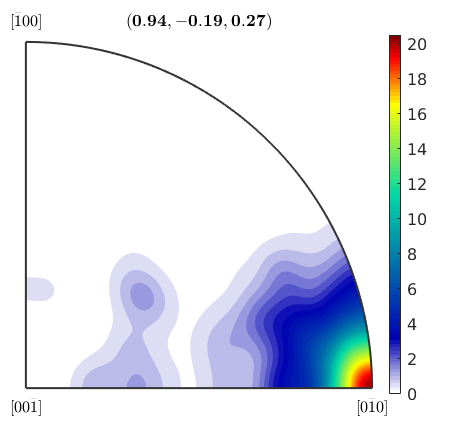
Surprisingly this value is significantly lower than the value we obtained we looking only at the 100 pole figure. Finally, let's plot the ODF along this fibre
odf = calcODF(ebsd('Forsterite').orientations) % plot the odf along the fibre plot(odf,f) ylim([0,26])
odf = ODF
crystal symmetry : Forsterite (mmm)
specimen symmetry: 1
Harmonic portion:
degree: 25
weight: 1
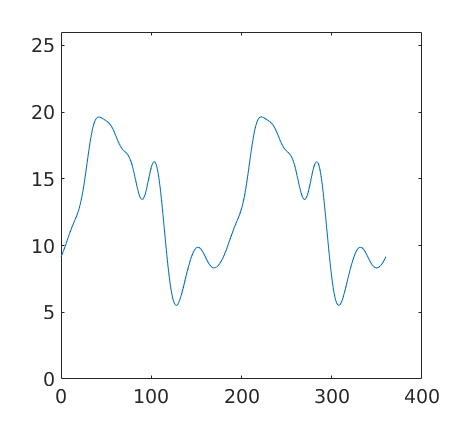
We see that to ODF is far from beeing constant along the fibre. Thus, together with an observation about the small fibre volume, we would reject the hypothesis of a fibre texture.
Let's finally plot the ODF in orientation space to verify our decision
plot(odf,'sigma')Warning: Plot properties not compatible to previous plot! I'going to create a new figure.
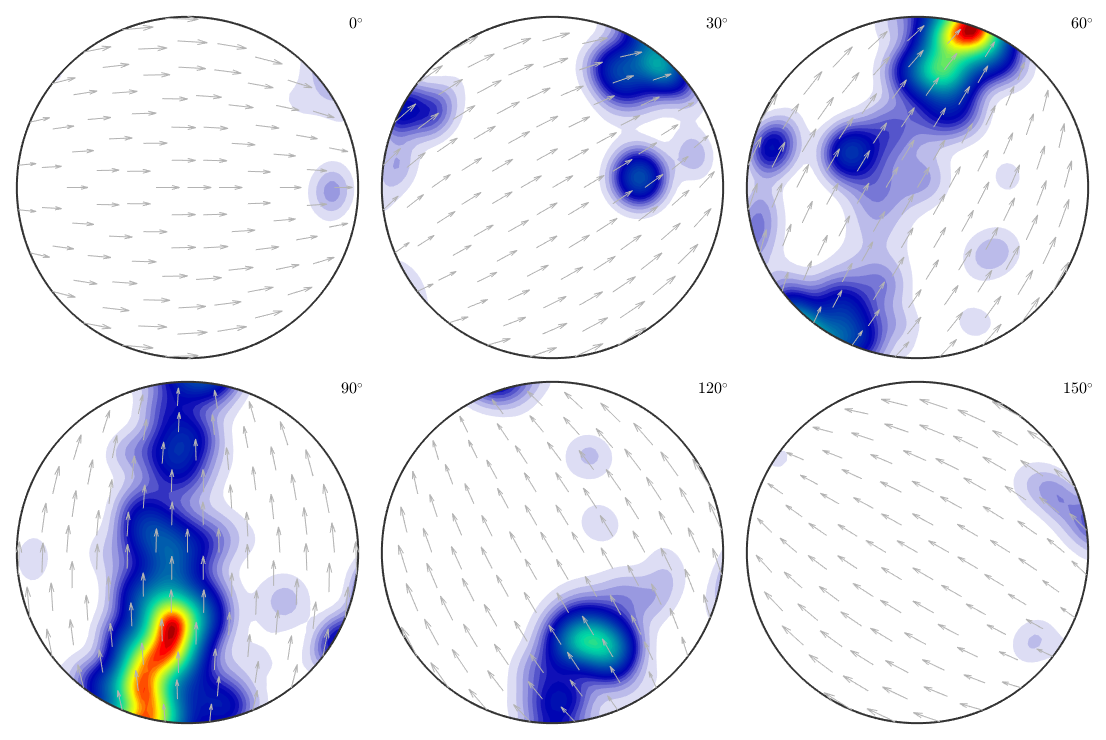
Here we see the typical large individual spots that are typical for large grains. Thus the ODF estimated from the EBSD data and all our previous analysis suffer from the fact that too few grains have been measured. For texture analysis, it would have been favorable to measure at a lower resolution but a larger region.
| DocHelp 0.1 beta |